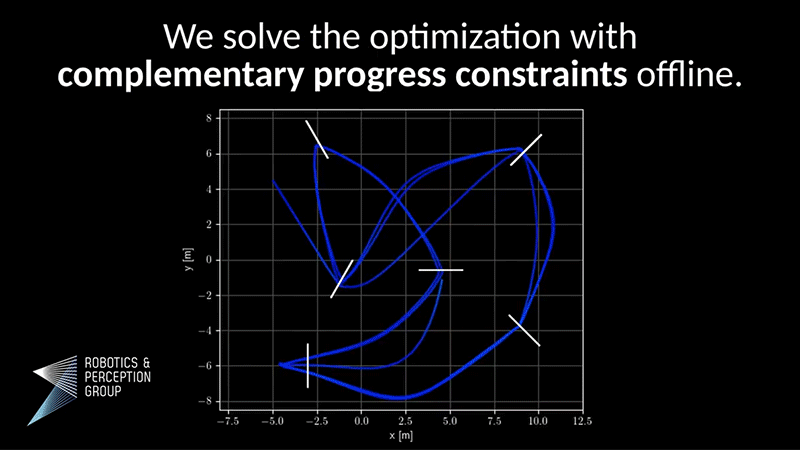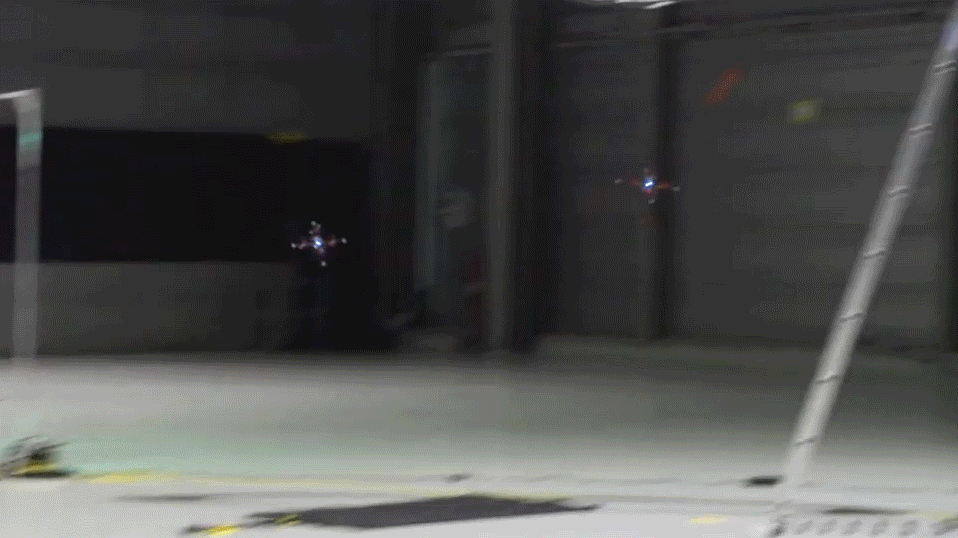Unlike auto racing, in drone racing the pilots aren’t subjected to debilitating G-forces, which means the races can take place at impossibly fast speeds. So fast, in fact, that autonomous drones have always lagged behind those piloted by humans who benefit from split-second reflexes. But that’s no longer the case.
Researchers at the University of Zurich have developed a new algorithm that can analyse a course with specific waypoints. Drone racing isn’t just flying in circles like Nascar — it requires the craft to navigate a complex layout of obstacles that often require tight turns or complete direction changes. The algorithm then calculates the most efficient route for a drone to fly, including the speeds, angles, and trajectories at which it navigates around or through the obstacles.

The new algorithm improves upon previous work by not only taking into account the limitations of a drone’s manoeuvrability — how fast it can fly, corner, and reverse directions — but it also plans its trajectory across the entire race route instead of breaking it up into smaller sections defined by each waypoint. As the drone passes through one obstacle, the trajectory it uses puts it on an optimised path for the next one, and so forth.

The researchers tested a drone powered by their new algorithm on an experimental race track against “two world-class human pilots” flying the same drone. The autonomous drone was able to beat both of their fastest laps. It’s an impressive accomplishment, and one that seemed inevitable, although there were some special circumstances at play.
For starters, it took the algorithm about an hour to calculate the drone’s optimal trajectories, so to make the competition as fair as possible, the human pilots were also given plenty of time to study and train on the course before the competition.
Human pilots also rely on a live video feed from a camera mounted on the drone they’re flying, giving them a first-person view of where they’re going using a pair of video goggles. But the algorithm-powered drone instead relied on external cameras positioned around the course, tracking its movements and providing real-time information about its exact location relative to the various waypoints at all times.
Is that cheating? Maybe, but the researchers are hopeful that one day the location awareness during a flight can be calculated using cameras onboard the drone instead of the around the course so it’s more independent.
And having an hour to calculate ideal trajectories around obstacles won’t always be an option in real-world scenarios, but as the power of mobile processors continues to increase, it’s only a matter of time before those hour-long calculations take mere seconds instead.
The research isn’t just about besting human pilots, however. Autonomous drones have been proven to be valuable tools for everything from delivering medications to providing search and rescue support. But powering four electric motors will always be a heavy drain on battery life, so calculating the most efficient and fastest flight route — be it around tall buildings in a crowded city, or through doorways and windows inside a house — can help expand the range, flight times, and usefulness of autonomous aircraft.
